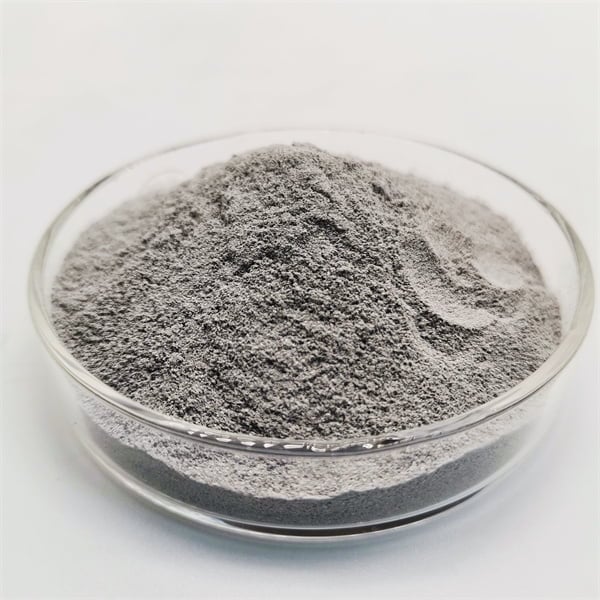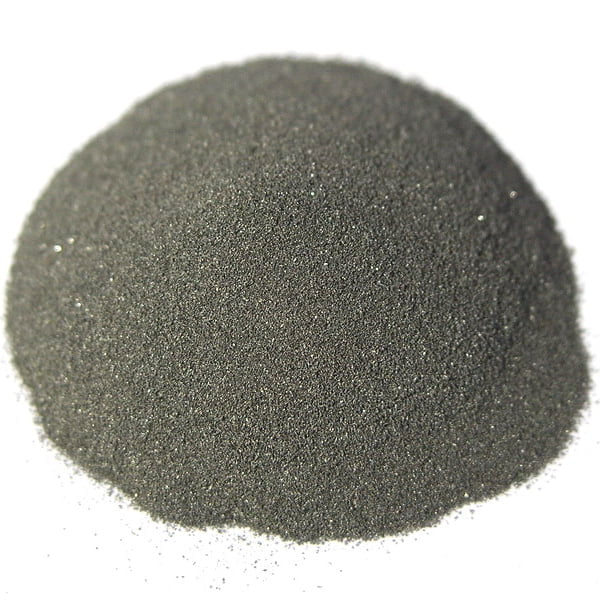molybdenlegeringar för additiv tillverkning av metall
Innehållsförteckning
Översikt över molybdenlegering kraft
Pulver av molybdenlegering är ett viktigt material för industriella 3D-printingapplikationer i metall, t.ex. verktyg, flyg, olja och gas samt optik.
Viktiga egenskaper hos pulver av molybdenlegeringar:
| Attribut | Beskrivning |
|---|---|
| Hållfasthet vid höga temperaturer | Bibehåller styrkan upp till 1300°C |
| Termisk ledningsförmåga | I nivå med stål, 2-3 gånger högre än titan |
| Korrosionsbeständighet | Utmärkt beständighet mot syror och klorider |
| Vanliga legeringar | Mo-Ti, Mo-TiB2, Mo-La2O3, Mo-ZrO2 |
| Tillämpningar | Verktyg, flyg- och rymdindustrin, optik, kärnkraft |
Molybdens höga smältpunkt, styrka och termiska egenskaper gör att det är mycket uppskattat för tryckta delar som arbetar under extrema temperaturer. Det ger nya designmöjligheter jämfört med traditionell bearbetning av molybden.

Tillämpningar av molybdenlegering kraft
De unika egenskaperna hos molybdenlegeringar gör dem lämpliga för
| Industri | Tillämpningar |
|---|---|
| Verktyg | Formsprutningsverktyg för plast, extruderingsverktyg, formverktyg |
| Flyg- och rymdindustrin | Ledkanter, tryckmunstycken, motorkomponenter |
| Optik | Speglar, precisionsoptik, substrat |
| Kärnkraft | Komponenter för plasmaskärm, värmesköldar |
| Olja och gas | Borrhålsverktyg, ventiler, delar till borrhålshuvud |
3D-printning möjliggör komplexa molybdenbaserade komponenter med konforma kylkanaler och lättviktsgitter som inte är möjliga med konventionella metoder.
Några specifika tillämpningar som drar nytta av molybdenlegeringar är
- Formsprutningsverktyg med konform kylning för kortare cykeltider
- Ledande kanter på hypersoniska farkoster ska tåla intensiv uppvärmning
- Spegelsubstrat som motstår termisk distorsion
- Munstycken till raketmotorer för flyg- och rymdindustrin med integrerade kylkanaler
- Komponenter för borrning i borrhål som kräver styrka och korrosionsbeständighet
Molybdenlegeringar möjliggör lättare och mer högpresterande metalldelar i alla branscher.
Populär molybdenlegeringsstyrka för Metal AM
Vanliga molybdenlegeringar som används för 3D-printning med metallpulverbäddfusion är
| Legering | Egenskaper | Tillämpningar |
|---|---|---|
| Mo-Ti | Hög hållfasthet, användning vid 1200°C | Flyg- och rymdteknik, kärnkraft |
| Mo-La2O3 | Utmärkt krypmotstånd | Flyg- och rymdteknik, optik |
| Mo-ZrO2 | Brottseghet, duktilitet | Industri, verktyg |
| Mo-TiB2 | Hårdhet, slitstyrka | Verktyg, optik |
| Mo-Re | Hållfasthet vid höga temperaturer | Kärnkraft, flyg- och rymdindustrin |
Den höga smältpunkten hos molybden gör det möjligt att använda ett brett spektrum av legeringstillsatser för att skräddarsy egenskaper som hårdhet, hållfasthet, duktilitet och korrosionsbeständighet efter behov.
molybdenlegering kraft Egenskaper
Molybdenlegeringspulver för metall AM har följande egenskaper:
| Parameter | Detaljer |
|---|---|
| Partikelns form | Sfärisk, vissa satelliter tillåtna |
| Partikelstorlek | 15-45 mikrometer typiskt |
| Storleksfördelning | D10, D50, D90 inom snäva intervall |
| Flytbarhet | Utmärkt flöde, inte agglomererat |
| Skenbar densitet | Över 4 g/cc |
| Renhet | Hög renhet, låg syrehalt föredras |
Gasatomisering används ofta för att producera det sfäriska molybdenlegeringspulvret som är idealiskt för fusionstryckning i pulverbädd.
Att kontrollera sammansättningen och minimera föroreningar som syre är avgörande för att uppnå önskade materialegenskaper i de tryckta delarna.
Krav på 3D-skrivare för metall
För att skriva ut detaljer i molybdenlegeringar krävs robusta industriella metallskrivare med:
| System | Typisk specifikation |
|---|---|
| Laserkraft | 300-500W |
| Bygg volym | 250 x 250 x 300 mm minimum |
| Inert gas | Argon föredras framför kväve |
| Precisionsoptik | 50 mikrometer minsta spotstorlek |
| Pulverhantering | System för metallpulver med slutet kretslopp |
| Operativ programvara | Underlättar produktion snarare än prototyptillverkning |
Den höga smältpunkten hos molybdenlegeringar kräver tillräcklig lasereffekttäthet och gasskydd. Automatiserade pulverhanteringssystem förbättrar produktiviteten och pulveråtervinningsbarheten.
Processparametrar för 3D-utskrift av metall
Typiska processparametrar för fusion med laserpulverbädd för molybdenlegeringar:
| Parameter | Räckvidd |
|---|---|
| Laserkraft | 250-500 W |
| Skanningshastighet | 400-1200 mm/s |
| Avstånd mellan luckor | 80-180 μm |
| Skiktets tjocklek | 20-100 μm |
| Stråldiameter | 50-100 μm |
| Skärmande gas | Argon, 0-5% väteblandningar |
Lägre porositet och högre densitet uppnås med högre lasereffekttäthet och finare luckavstånd.
Processoptimering krävs för att balansera densitet mot restspänningar och sprickbenägenhet för varje molybdenlegering.

Riktlinjer för design av 3D-utskrifter i metall
Viktiga konstruktionsprinciper för delar i molybdenlegeringar:
| Designaspekt | Riktlinjer |
|---|---|
| Väggtjocklek | 1-2 mm minsta tjocklek |
| Överhäng | 45-60° minimum utan stöd |
| Ytfinish | Som tryckt är det grovt, efterbearbeta om det behövs |
| Restspänning | Noggranna skanningsstrategier och glödgning |
| Stöd för | Noggrann design för att minimera användningen av stöd |
Den höga styvheten hos molybdenlegeringar gör hanteringen av restspänningar kritisk. Simuleringsprogram behövs för att optimera skanningsmönster och stödstrukturer.
Mekaniska egenskaper hos tryckta molybdenlegering kraft
Typiska mekaniska egenskaper hos tryckta molybdenlegeringar:
| Legering | Densitet (g/cc) | Hållfasthet (MPa) | Hårdhet (HV) |
|---|---|---|---|
| Mo-Ti | 9.9 | 700-900 | 350-450 |
| Mo-La2O3 | 10.1 | 850-1050 | 400-500 |
| Mo-ZrO2 | 9.8 | 600-800 | 300-400 |
| Mo-TiB2 | 9.5 | 650-850 | 400-600 |
| Mo-Re | 10.5 | 900-1100 | 350-450 |
Egenskapsområdena beror på sammansättning, processparametrar och värmebehandling. Molybdenlegeringar uppnår exceptionella prestanda vid höga temperaturer.
Stödstrukturer för tryckning av molybdenlegerad kraft
Stödstrukturer behövs ofta vid tryckning av delar i molybdenlegeringar:
- Överhäng som är större än 45° kräver vanligtvis stöd
- Block med tätt stöd eller glesa stödgitter kan användas
- Stöd med låg kontaktyta rekommenderas för att minimera ytdefekter
- Noggrann orientering minimerar behovet av stöd
- Lösliga PVA- eller brytbara plaststöd tillgängliga
Genom att minimera användningen av stöd minskar ytdefekter och efterbearbetningstiden. Den höga styvheten hos molybden leder till att stödstrukturerna lättare lossnar.
Vanliga defekter i tryckt molybdenlegerad kraft
Potentiella defekter vid tryckning av molybdenlegeringar:
| Defekt | Orsak | Förebyggande åtgärder |
|---|---|---|
| Porositet | Låg pulverdensitet, brist på fusion | Optimera processparametrarna |
| Sprickbildning | Restspänningar | Modifiera geometri, skanning, stöd |
| Vridning | Termiska påfrestningar | Förvärm substratet, avlasta |
| Ytjämnhet | Osmälta partiklar, balling | Justera kraft, hastighet och fokus |
| Anisotropi | Riktad mikrostruktur | Optimera byggorienteringen |
Defekter kan minimeras genom noggrant val av parametrar, pulverspridning, scanningsstrategi och optimal orientering av detaljerna på byggplattan.
Metoder för efterbearbetning
Typiska efterbehandlingssteg för tryckta delar av molybdenlegeringar:
| Metod | Syfte |
|---|---|
| Stöd för borttagning | Avlägsnande av stödstrukturer från del |
| Ytbehandling | Förbättra ytfinishen |
| Varm isostatisk pressning | Avlägsnar inre hålrum, förbättrar densiteten |
| Värmebehandling | Avlastning av restspänningar |
| Sammanfogning | Svetsning av flera tryckta komponenter |
Den tryckta mikrostrukturen och de mekaniska egenskaperna hos molybdenlegeringar kan också skräddarsys genom värmebehandling. Detta förbättrar egenskaper som duktilitet och brottseghet.
Kvalificeringstestning
Grundliga tester krävs för att kvalificera tryckta molybdenkomponenter:
| Testmetod | Typiska krav |
|---|---|
| Analys av densitet | > 99% av bearbetat material |
| Dragprovning | Uppfyller minimikrav på hållfasthet och duktilitet |
| Mikrostruktur | Konsekvent, defektfri kornstruktur |
| Hårdhetsprovning | Enligt krav för tillämpning |
| Slagprovning | Minsta slagenergi för frakturer |
Icke-destruktiv utvärdering som CT-skanning hjälper till att identifiera eventuella interna hålrum eller defekter.
Välja en molybdenlegering kraft Leverantör
Viktiga faktorer vid val av leverantör av molybdenlegeringar:
| Faktor | Kriterier |
|---|---|
| Kvalitetssystem | ISO 9001- eller AS9100-certifierad |
| Karaktärisering av pulver | Ger data om partikelstorleksfördelning och morfologi |
| Processtyrning | Tät kontroll av gasatomiseringsprocessen |
| Specialisering | Fokus på gasatomiserade legeringar skräddarsydda för AM |
| Teknisk support | Applikationsingenjörer som hjälper till med produktutveckling |
| Referenser från kunder | Fallstudier för AM-tillämpningar |
Genom att välja en leverantör med pulver som är särskilt optimerat för AM får man de bästa tryckresultaten.
Kostnadsanalys av tryckta delar av molybdenlegeringar
Kostnadsfaktorer för tryckta delar av molybdenlegeringar:
- Hög kostnad för molybdenpulver - $350-700/kg
- Skrivarproduktiviteten påverkar kostnaden per detalj
- Materialutnyttjandegrad för 30-50%
- Arbete för efterbehandlingssteg
- Extra kostnader för HIP, maskinbearbetning, värmebehandling
Faktorer i kostnadsmodellen:
- Investering för inköp av skrivare - $500,000+
- Låg-måttlig bygghastighet - 5-15 cm3/timme
- Måttlig-hög material
Kostnadsfördelar jämfört med traditionell bearbetning
Fördelar med att trycka molybdenlegeringar jämfört med traditionella metoder:
| Additiv tillverkning | Traditionell bearbetning | |
|---|---|---|
| Ledtid | Dagar | Veckor |
| Designfrihet | Komplexa geometrier, gitter | Designbegränsningar |
| Anpassning | Lättanpassade konstruktioner | Svåra processförändringar |
| Konsolidering | Integrerade, tryckta enheter | Flera tillverkningssteg |
| Materialavfall | Nära nettoform, lågt spill | Hög materialavverkning |
För låga till medelstora volymer är AM mer kostnadseffektivt. Traditionella metoder har fördelar för höga volymer.
Hållbarhetsfördelar med 3D-utskrift i metall
Hållbarhetsfördelar med tryckning av molybdenlegeringar:
- Minska materialspillet genom att bara använda det pulver som behövs
- Möjliggör lättviktiga, optimerade konstruktioner genom topologioptimering
- Lokaliserad produktion minskar transportutsläppen
- Återvinning av pulver förbättrar hållbarheten ytterligare
- Produktion på begäran undviker slöseri med överproduktion
- Konsoliderade delar minskar nedströms bearbetning
Tekniken främjar mer hållbara metoder för teknisk design och tillverkning.
Tillämpningar som drar nytta av molybdenlegeringar
Viktiga tillämpningar som drar nytta av molybdenlegeringarnas kraft:
| Tillämpning | Fördelar |
|---|---|
| Formsprutningsverktyg | Hållfasthet vid höga temperaturer, konform kylning |
| Styrpropellrar för flyg- och rymdindustrin | Tål avgastemperaturer på 2300°C |
| Flygplanets framkant | Kapacitet för höga temperaturer under hypersonisk flygning |
| Reaktorer för kärnfusion | Tål extrem neutronstrålning |
| Optiska speglar | Motstår termisk distorsion |
3D-printning möjliggör komplexa geometrier som inte är möjliga med smidda molybdendelar.
Trender och utveckling inom molybdenlegeringar
Nya trender inom pulver av molybdenlegeringar:
- Nya legeringssammansättningar skräddarsydda för AM-egenskaper
- Större batchstorlekar produceras för stordriftsfördelar
- Tätare kontroll av pulvrets egenskaper och kvalitet
- Förbättrad återvinningsbarhet för pulver
- Sjunkande kostnader genom ökade produktionsvolymer
- Större utbud av tillgängliga partikelstorleksfördelningar
- Ökad konkurrens bland leverantörer
- Mer lokalisering av leveranskedjan utanför Kina
Pulvren blir allt mer optimerade och ekonomiska i takt med att AM-marknaden expanderar.

Sammanfattning av molybdenlegeringarnas effekt för Metal AM
- Viktigt för korrosionsbeständiga tryckta komponenter för höga temperaturer
- Kräver skrivare med hög effekttäthet och inerta atmosfärer
- Noggrann processtyrning krävs för att minimera antalet defekter
- Ger bättre prestanda än konventionell molybden
- Tillämpningar inom verktyg, flyg- och rymdindustrin, energi, optik
- Höga materialkostnader men lägre totala komponentkostnader
- Förbättrade pulver och tillgänglighet i leveranskedjan växer fram
Molybdenlegeringar kommer att möjliggöra lättare, mer högpresterande additivt tillverkade metallkomponenter i krävande industriella applikationer.
VANLIGA FRÅGOR
| Fråga | Svar |
|---|---|
| Vilken partikelstorlek rekommenderas för molybdenlegeringar? | 15-45 mikrometer normalt, beroende på legering och tillämpning. |
| Vilka skrivare kan bearbeta molybdenlegeringar? | Högeffektsystem från EOS, Concept Laser, Trumpf, GE Additive. |
| Vilken finish kan erhållas på tryckta ytor? | Som tryckt är det grovt med 10-15 μm Ra. Bearbetning kan uppnå under 1 μm. |
| Vilken efterbearbetning krävs vanligtvis? | Borttagning av stöd, avspänning, isostatisk varmpressning, maskinbearbetning. |
| Hur återvinningsbara är pulvren? | Puder kan i allmänhet återanvändas 5-10 gånger innan det blir gammalt. |
Dela på
MET3DP Technology Co, LTD är en ledande leverantör av lösningar för additiv tillverkning med huvudkontor i Qingdao, Kina. Vårt företag är specialiserat på 3D-utskriftsutrustning och högpresterande metallpulver för industriella tillämpningar.
Förfrågan för att få bästa pris och anpassad lösning för ditt företag!
Relaterade artiklar

Högpresterande segment för munstycksvingar: Revolutionerande turbineffektivitet med 3D-utskrift i metall
Läs mer "Om Met3DP
Senaste uppdateringen
Vår produkt
KONTAKTA OSS
Har du några frågor? Skicka oss meddelande nu! Vi kommer att betjäna din begäran med ett helt team efter att ha fått ditt meddelande.

Metallpulver för 3D-printing och additiv tillverkning
FÖRETAG
PRODUKT
cONTACT INFO
- Qingdao City, Shandong, Kina
- [email protected]
- [email protected]
- +86 19116340731








